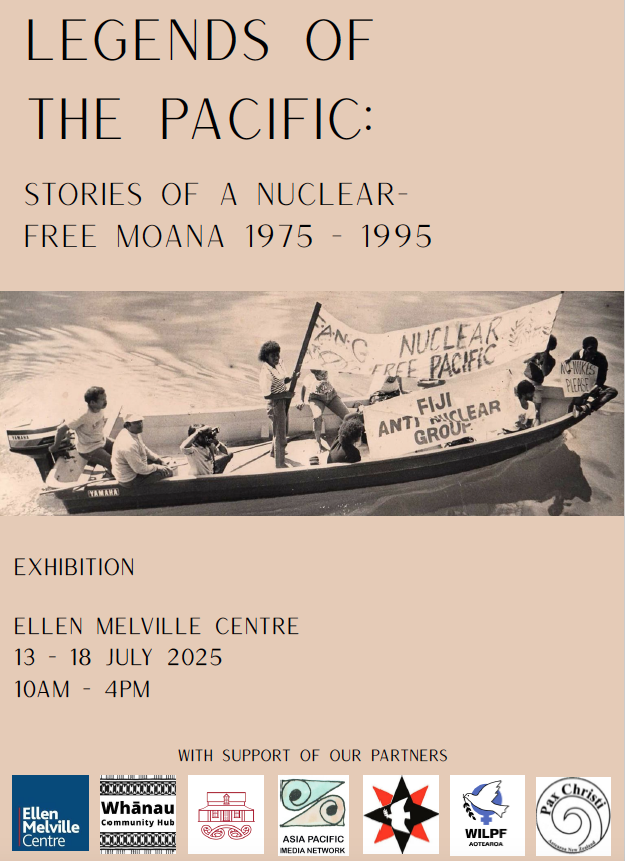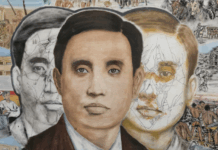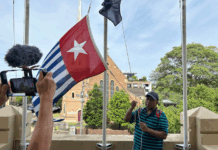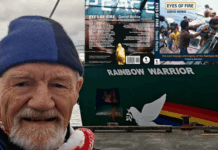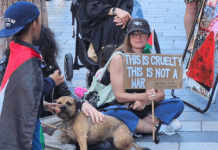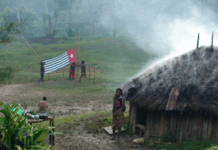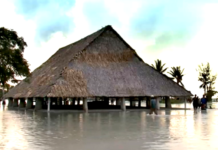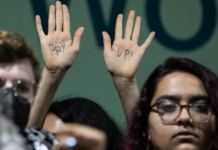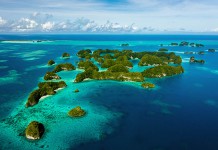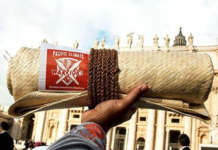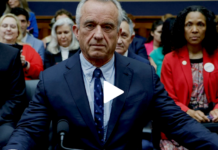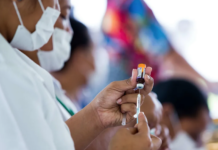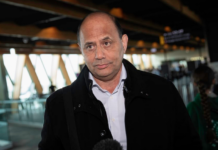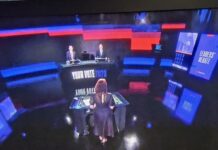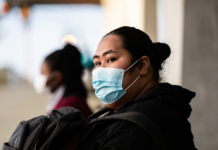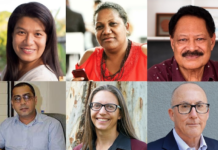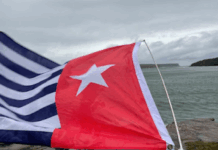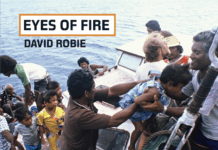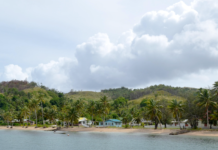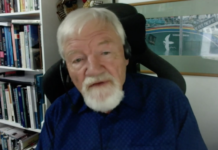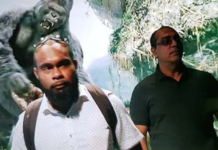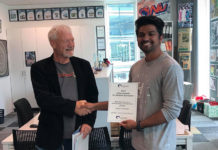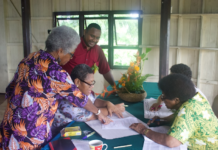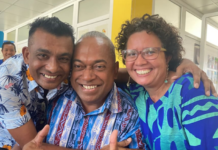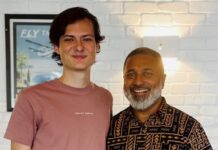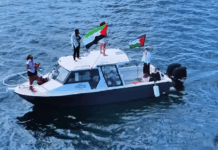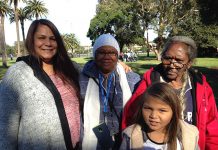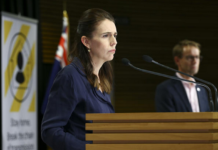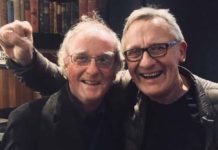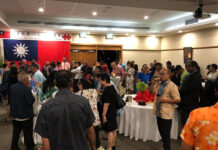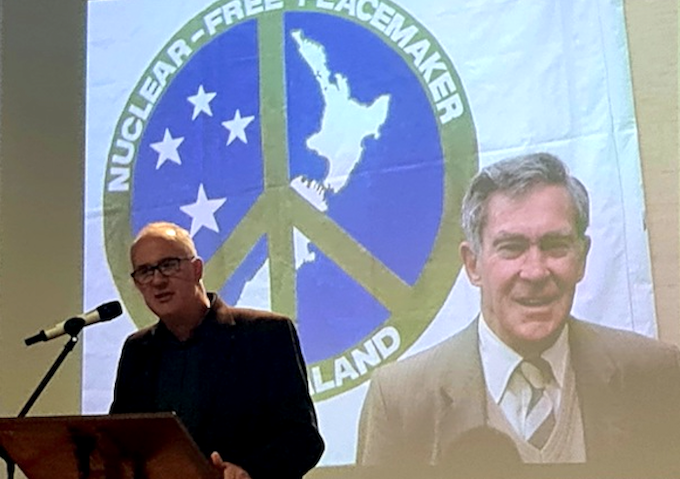
Asia Pacific Report
An opposition Labour Party MP today paid tribute to the Nuclear Free and Independent Pacific (NFIP) movement, saying it should inspire Aotearoa New Zealand to maintain its own independence, embrace a strong regionalism, and be a “voice for peace and demilitarisation”.
But Phil Twyford, MP for Te Atatu and spokesperson on disarmament, warned that the current National-led coalition government was “rapidly going in the other direction”.
“It mimics the language of the security hawks in Washington and Canberra that China is a threat to our national interests,” he said.
“That is then the springboard for a foreign policy ‘reset’ under the current government to a closer strategic alignment with the United States and with what are often more broadly referred to as the ‘traditional partners’.
“For that read the Five Eyes members, but particularly the United States.”
Speaking at the opening of the week-long “Legends of the Pacific: Stories of a Nuclear-Free Moana 1975-1995” exhibition at the Ellen Melville Centre, Twyford referred to the 40th anniversary of the Rainbow Warrior bombing by French secret agents on 10 July 2025.
“Much has been made in the years since of what a turning point this was, and how it crystallised in New Zealanders a commitment to the anti-nuclear cause,” he said.
However, he said he wanted to talk about the “bigger regional phenomenon” that shaped activism, public attitudes and official policies across the region, and what it could “teach us today about New Zealand’s place in the world”.
“I am talking about the Nuclear Free and Independent Pacific movement.
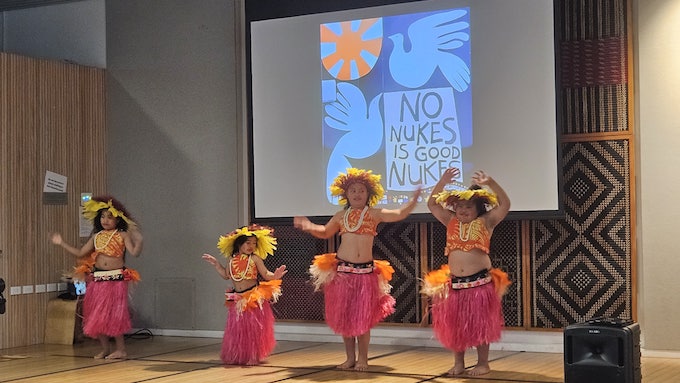
“Activists and leaders from across the Pacific built a movement that challenged neocolonialism and colonialism, put the voices of the peoples of the Pacific front and centre, and held the nuclear powers to account for the devastating legacy of nuclear testing.”
The NFIP movement led to the creation of the Treaty of Rarotonga, the Pacific’s nuclear weapons free zone, Twyford said. It influenced governments and shaped the thinking of a generation.
However, he stressed the “storm clouds” that were gathering as indicated by former prime minister Helen Clark in her prologue to journalist and author David Robie’s new book Eyes of Fire: The Last Voyage and Legacy of the Rainbow Warrior just published this week.
Twyford said that with increasing great power rivalry, the rise of authoritarian leaders, and the breakdown of the multilateral system “the spectre of nuclear war has returned”.
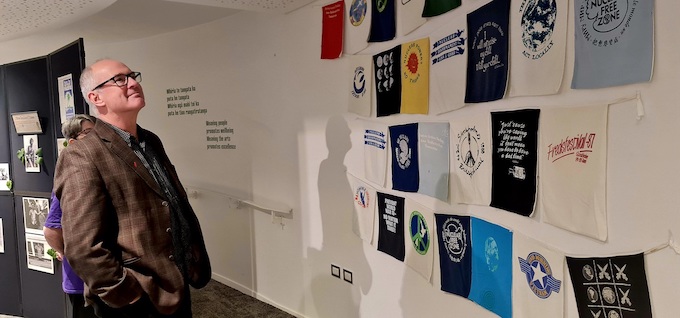
New Zealand faced some stark choices about how it made its way in the world, kept their people and the region safe, and remained “true to the values we’ve always held dear”.
The public debate about the policy “reset” reset had focused on whether New Zealand would be part of AUKUS Pillar Two, “the arrangement to share high end war fighting technology that would sit alongside the first pillar designed to deliver Australia its nuclear submarines”.
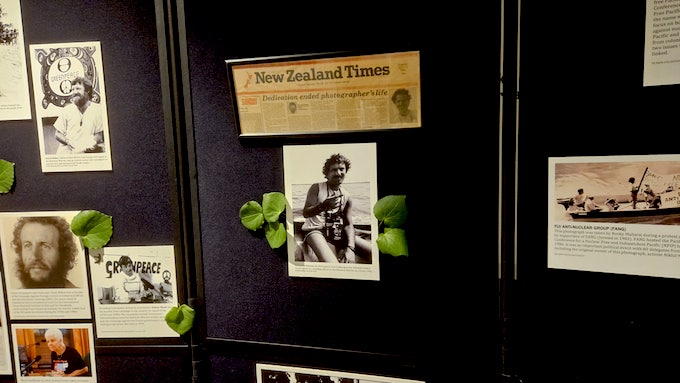
While the New Zealand government had had little to say on AUKUS Pillar Two since the US elections, the defence engagement with the US had “escalated”.
It now included participation in groupings around supply chains, warfighting in space, interconnected naval warfare, and projects on artificial intelligence and cyber capabilities.
China’s growing assertiveness as a great power was not the main threat to New Zealand.
“The biggest threat to our security and prosperity is the possibility of war in Asia between the United States and China,” he said.
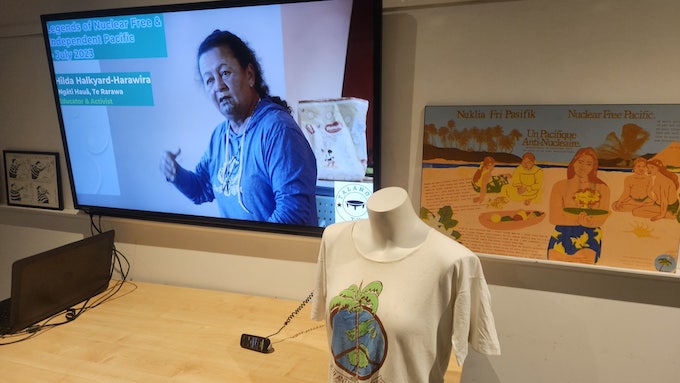
“Rising tensions could conceivably affect trade, and that would be disastrous for us. All-out war, especially if it went nuclear, would be catastrophic for the region and probably for the planet.”
Labour’s view was that security for New Zealand and the Pacific could be pursued through active engagement with the country’s partners across the Tasman and in the Pacific, and Asia — and be a voice for peace and demilitarisation.
Twyford acknowledged Dr Robie’s “seminal book” Eyes of Fire, thanking him for “a lifetime’s work of reporting important stories, exposing injustice and holding the powerful to account”.
Dr Robie spoke briefly about the book as a publishing challenge following his earlier speech at the launch on Thursday.
Other speakers at the opening of the nuclear-free Pacific exhibition included veteran activist such as Reverend Mua Strickson-Pua; Bharat Jamnadas, an organiser of the original Nuclear-Free and Independent Pacific (NFIP) conference in Suva, Fiji, in 1975; businessman and community advocate Nikhil Naidu, previously an activist for the Fiji Anti-Nuclear Group (FANG); and Dr Heather Devere, peace researcher and chair of the Asia Pacific Media Network (APMN).
The Te Vaerua O Te Rangi dance group also performed Cook Islands items.
The exhibition has been coordinated by the APMN in partnership with Heritage New Zealand Pouhere Taonga, with curator Tharron Bloomfield and Antony Phillips; Ellen Melville Centre; and the Whānau Communty Centre and Hub.
It is also supported by Pax Christi, Quaker Peace and Service Fund, and Women’s International League for Peace and Freedom (WILPF).
The exhibition recalls New Zealand’s peace squadrons, a display of activist tee-shirt “flags”, nuclear-free buttons and badges, posters, and other memorabilia. A video storytelling series about NFIP “legends” such as Hilda Halyard-Harawira and Dr Vijay Naidu is also included.
- “Legends of the Pacific: Stories of a Nuclear-free Moana 1975-1995”, daily, 10am-4pm, Ellen Melville Centre’s Paddy Walker Room, Freyberg Place, July 13-18.
